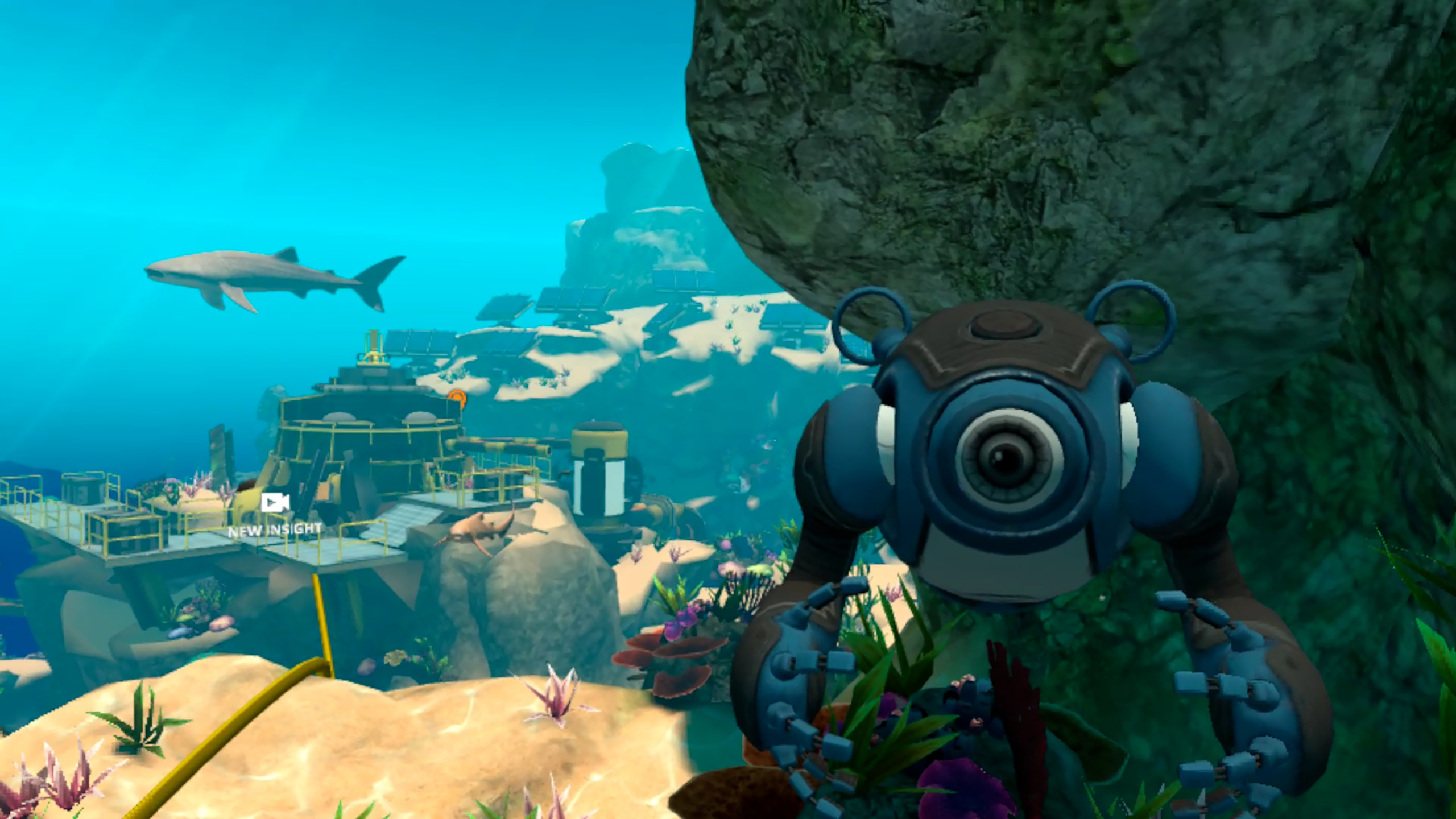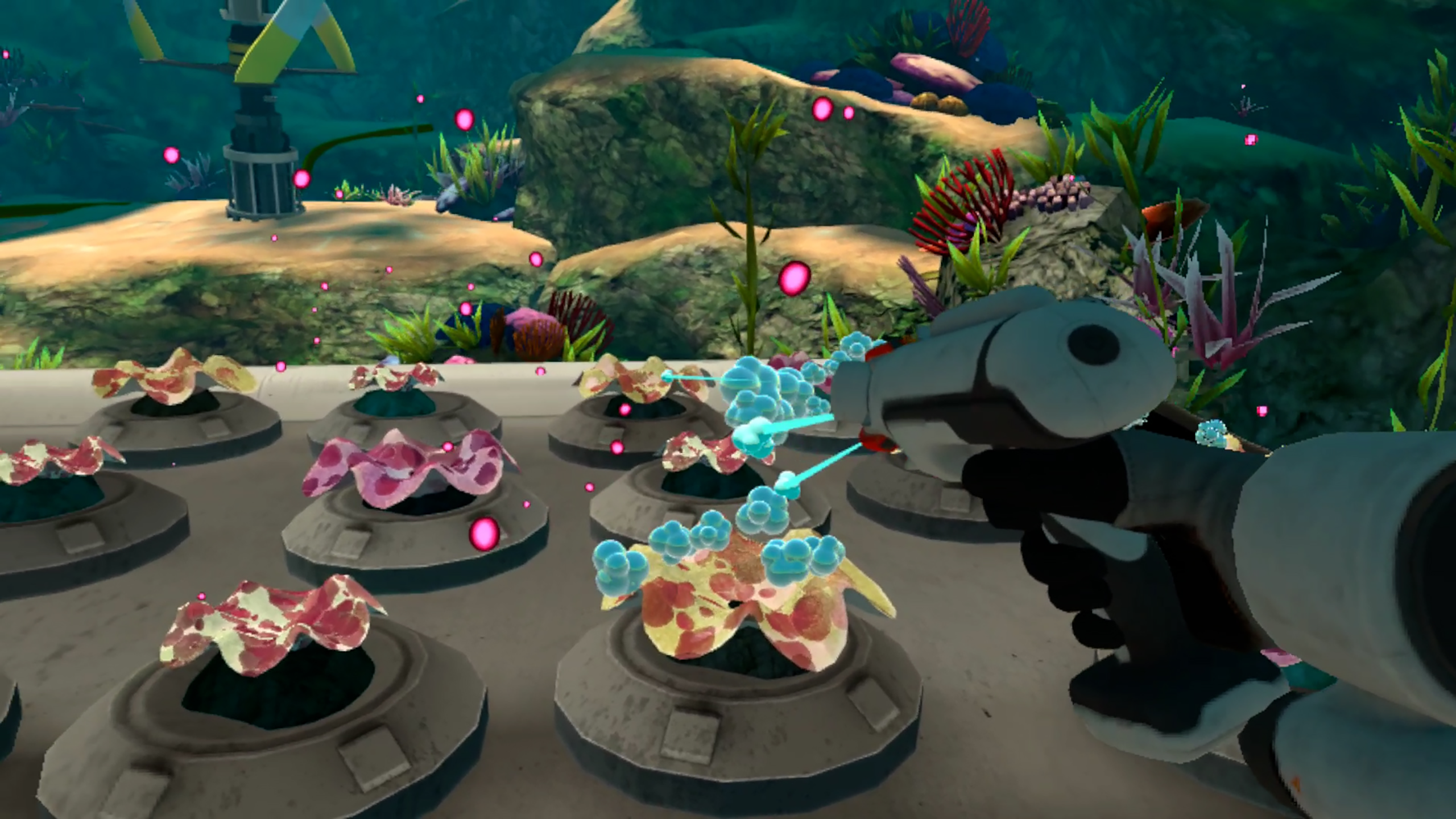
Listen to The VRverse Podcast


Review: Beyond Blue: After The Storm
- February 2, 2025
- 10:04 pm
- Standalone
When I had the chance to try out the flatscreen version of Beyond Blue at EGX Rezzed in 2019, I asked the developers if they had ever thought about adding a Virtual Reality mode to the game. They mentioned that they would have loved to do so, but since they were a small team, they had to consider factors like the bobbing motion while swimming, which would make it a bit too much work for their size. I still had a great time playing the flatscreen version when it was released, so when After The Storm was announced for VR, I was thrilled to dive back into the waters with Beyond Blue.

Release Date: January 30th 2025
Developer: E-Line Media, Chaos Theory Games
Publisher: E-Line Media
Price: £11.99
Reviewed On: Meta Quest 3
* Access Provided For Review *
Tropical Storm
In this game, you take on the role of a marine biologist named Mirai. After a tropical storm hits, you must venture into the deep blue ocean to assess the damage to your research facility. As you explore, you discover that both the wildlife and plant life are unwell. Your new mission is to uncover the source of this troubling situation.
Investigate The Damage
Beyond Blue: After The Storm continues the narrative established in the flatscreen version of the game, highlighting the dangers of climate change and the significance of conservation efforts. This is achieved through the game’s campaign, along with additional mini-documentaries that players can view outside of the main storyline. However, the primary attraction remains the campaign itself, featuring engaging and well-paced storytelling.
You will embark on a campaign where you’ll explore and evaluate various underwater scenes. This adventure will present several straightforward elements, and as the team aims to showcase the impacts of climate change, you’ll always have a clear indication of your next mission. Maria comes equipped with a range of tools, from a scanner to a cutting device, which are crucial not just for the main storyline but also for the smaller side quests featured in the game. You can utilise the scanner to examine various elements of the wreckage, sections of the research facility, or even the local wildlife and plants to gather information about each species you encounter. The cutter will assist you in clearing obstructions by slicing through materials such as girders and metal grates. Additionally, you’ll have access to a sealant gun for mending cracks in pipes, as well as a healing gel to aid sick creatures and flora in their recovery.
You will also have the option to play as another character named Kanaloa, an AI-powered robot designed to assist with heavy tasks. There will be moments when you collaborate, with Kanaloa handling the physical work, such as holding a metal sheet in place, while you switch to Mirai to apply the sealant with the sealant gun. This adds some variety and helps you value the company you have by your side. You can collaborate to rescue some sea creatures that are stuck in the wreckage. Kanaloa will clear away any obstacles, while Mirai will handle cutting through grates or opening containers that the animals are trapped in.
The movement mechanics in the game, along with certain choices, slightly detract from the overall gameplay experience. Given that the setting is entirely underwater and you take on the role of a marine biologist, it would have greatly enhanced immersion to have swimming movements as an option. Instead, movement relies on analog controls and arm boosters—one for precise navigation and both for quicker travel. Unfortunately, even at maximum speed, you basic pace feels frustratingly slow, which brings up another concern: the forced vignette that accompanies boosting cannot be disabled. It would be great if this could be made optional in the future, as it can be bothersome for experienced VR users who don’t need it. Aside from these minor issues, the control system is quite well thought out.
A Perfect Atmosphere
Beyond Blue: After The Storm can look quite stunning on the Meta Quest 3, but there’s a catch: you can only truly appreciate it when you’re stationary, which isn’t very common. The issue arises when you start moving, as there’s noticeable visual pop-in that can be quite distracting. As you get closer to the environment, the details and textures gradually load in, which can take away from the experience. While it’s not the worst-looking game available on the standalone device, I believe the Quest 3 has the potential to improve the visuals and eliminate the pop-in issues. Additionally, the immersion is slightly disrupted by the fact that while your character is represented by floating hands, you can’t see the tools at your side. This means you end up pulling them from thin air, and if you’re not positioned just right, you might accidentally select the wrong tool. A simple solution could have been to implement a multi-tool feature.
The game’s audio does an excellent job of enhancing the feeling of being underwater, with sounds that beautifully complement the serene atmosphere of the calm waters depicted in the game. You’ll hear a variety of sea life noises, from the playful clicks of dolphins to the haunting songs of whales, all contributing to that authentic underwater experience. As you explore, gentle ambient music plays in the background, perfectly aligning with the game’s rhythm. The narrative is brought to life through impressive voice acting, particularly by Erika Ishii as Mirai. While some of the repeated lines can feel a bit cheesy and may become tiresome during her exchanges with assistant Andre over the radio, the overall audio effectively creates a captivating atmosphere that deepens the immersion.
Comfort
| Posture | Supported |
|---|---|
| Standing mode | Yes |
| Seated Mode | Yes |
| Artificial Crouch | N/A |
| Real Crouch | N/A |
| Movement | Supported |
| Smooth Locomotion | Yes |
| - Adjustable Speed | Yes |
| Teleport | No |
| Blinders/Vignette | Yes |
| - Adjustable Strength | No |
| Head-based | No |
| Controller-based | Yes |
| Dominant Hand Switcher | No |
| Turning | Supported |
| Smooth Turning | Yes |
| - Adjustable Speed | Yes |
| Snap Turning | Yes |
| - Adjustable increments | No |
| Input | Supported |
| Tracked Controllers | Yes |
| Hand Tracking | No |
| Gamepad | No |
The Verdict

Beyond Blue: After The Storm clearly emphasises its commitment to raising awareness about climate change and the conservation of marine life, aligning with the flatscreen game released in 2020. The narrative unfolds at a thoughtful pace as you investigate the damage to your research facility and uncover the causes behind the sickness affecting wildlife and plants following a tropical storm. The gameplay is intentionally slow-paced, which complements the game’s objectives without feeling overwhelming. However, there are some drawbacks, such as pop-in issues and certain control choices—most notably, the absence of an option to swim using physical motions, despite the underwater setting. Nevertheless, these minor flaws do not detract from the significant message conveyed throughout the approximately two-hour campaign and the mini-documentaries you can unlock, which are definitely worth viewing.

